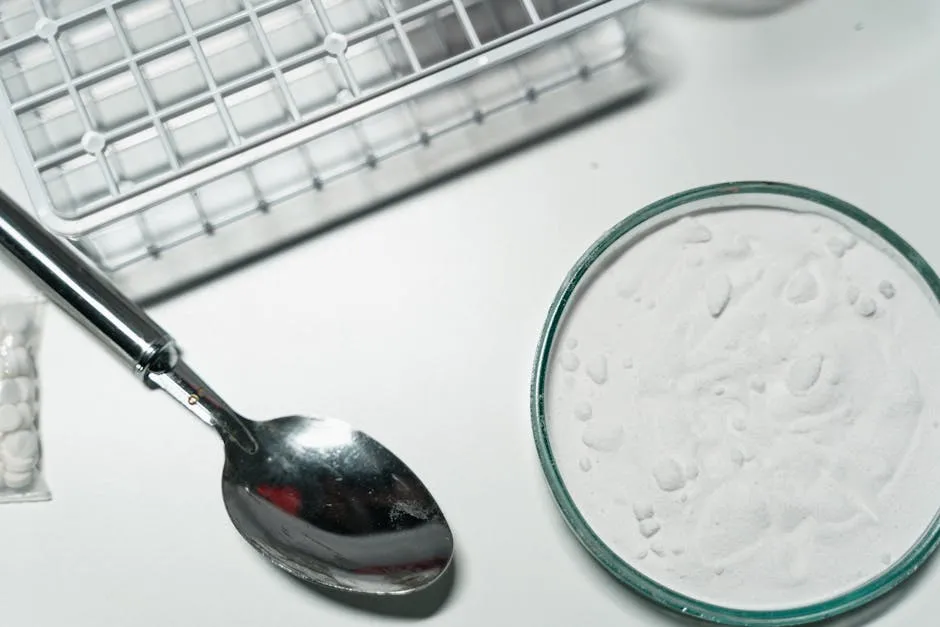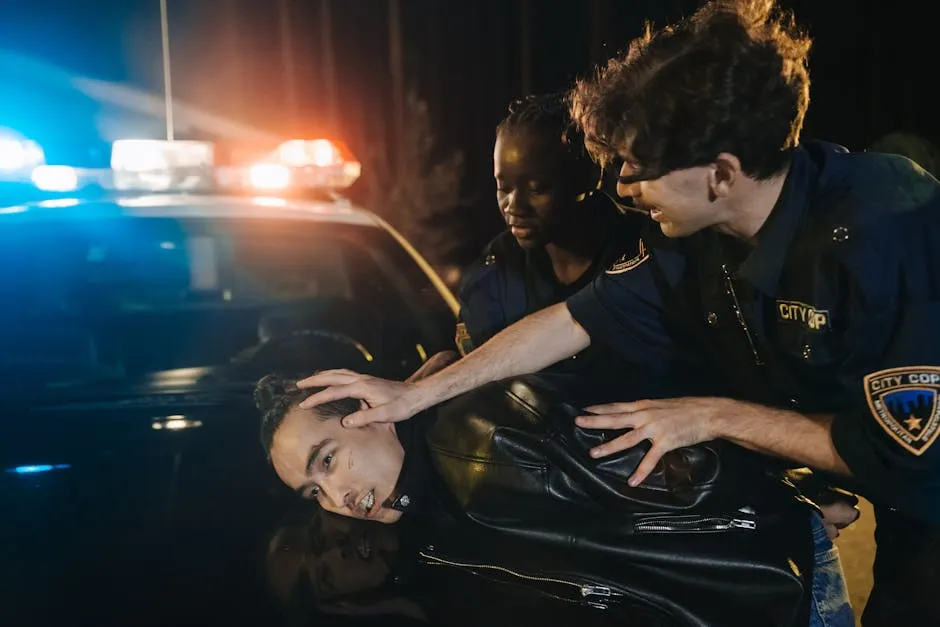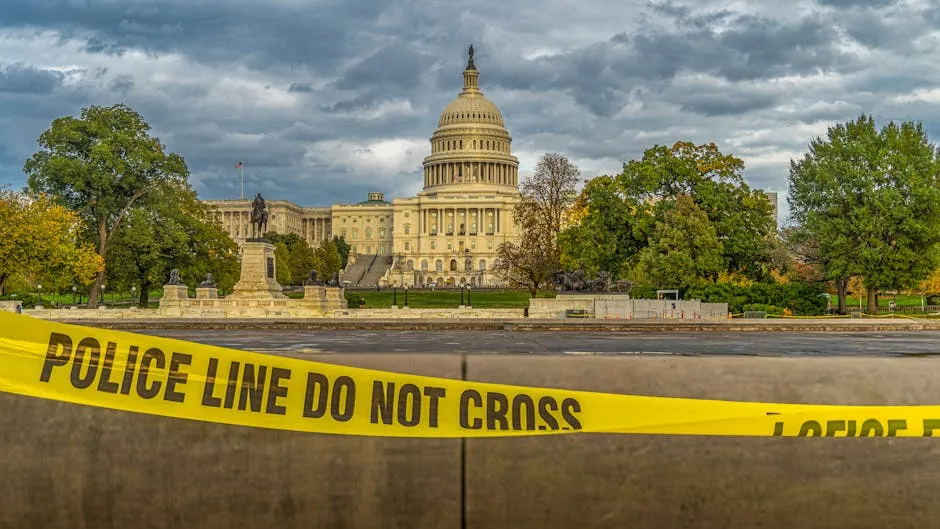Introduction
Guam, a charming U.S. territory in the Western Pacific, is a vibrant melting pot. Known for its stunning beaches and rich Chamorro culture, the island also faces unique challenges. Understanding Guam’s crime statistics is crucial for residents, tourists, and policymakers alike. It helps paint a clearer picture of safety and security on the island.
Crime statistics serve multiple purposes. For residents, they offer insights into their safety and community. For tourists, these numbers help gauge the risks involved in their travels. Policymakers rely on this data to craft effective laws and initiatives. They need to know where crime is rising and which types of offenses need more attention.
If you’re looking to understand the psychological impact of crime on individuals, the book The Anatomy of Violence: The Biological Roots of Crime by Adrian Raine is a fascinating read that dives deep into the psychological and biological factors that contribute to criminal behavior. Understanding these elements can help us tackle crime more effectively.
This article delves into three key themes: historical crime trends, ongoing challenges, and comparisons with other regions. By analyzing past and present statistics, we can better understand the factors influencing crime on the island. We’ll explore how things have changed over the decades and what challenges remain today.

As we navigate through this comprehensive analysis, it’s essential to acknowledge the complexities surrounding crime in Guam. While the numbers may seem daunting, they also highlight the efforts made by local authorities and communities to foster safety. With this in mind, let’s embark on an engaging exploration of Guam’s crime statistics.
Understanding Guam’s Crime Landscape
Overview of Crime in Guam
When it comes to safety, perceptions often differ from reality. Many view Guam as a safe haven, especially compared to larger U.S. cities. However, crime does exist. The most prevalent types of crime on the island include property crimes, violent crimes, and drug-related offenses.
Property crimes, such as theft and burglary, often attract the most attention. These offenses can create a sense of vulnerability among residents. Violent crimes, while less common, receive significant media coverage. High-profile incidents can lead to fear and anxiety, impacting how the community perceives safety.
Drug-related offenses have also surged in recent years. The island has faced challenges with methamphetamine use, contributing to an increase in violent crime linked to drug addiction. Local law enforcement and community organizations are working to combat these issues, but the impact of drugs on crime cannot be overlooked.
For those who prioritize safety in their daily lives, investing in a Home Security System can provide peace of mind. With features like motion detection and 24/7 monitoring, you can protect your home and loved ones from potential threats.
Historical Crime Rate Data
Let’s take a trip down memory lane. Historical crime statistics from 1960 to 2023 show a fascinating yet complex evolution of crime on the island. Over these decades, crime rates have seen both alarming spikes and notable declines.
In the early 2000s, Guam witnessed a surge in violent crimes, sparking concern among residents. However, as law enforcement increased its presence and community initiatives gained traction, crime began to decline. For instance, in 2019, the violent crime rate was notably high, but it dropped significantly in the following years.
The following table summarizes key historical crime rate data:
| Year | Violent Crimes Rate | Property Crimes Rate |
|---|---|---|
| 1960 | 1.2 | 3.5 |
| 2000 | 4.5 | 7.8 |
| 2010 | 2.1 | 5.4 |
| 2020 | 4.0 | 6.0 |
| 2023 | 2.5 | 4.0 |
This data reveals significant trends in violent crimes over time, highlighting the island’s ongoing struggle with safety. Despite various fluctuations, community efforts and law enforcement initiatives continue to evolve, aiming to create a safer Guam for all.

In summary, Guam’s crime landscape is characterized by a mix of challenges and resilience. Understanding these trends is essential for addressing future concerns and fostering a sense of security among residents and visitors alike.
Recent Crime Statistics
Breakdown of Crime by Type
Violent Crimes
Guam’s violent crime statistics present a mixed bag. In recent years, the island has seen fluctuations in rates of murder, aggravated assault, and robbery. In 2021, the Guam Police Department reported 665 violent crimes, down from 703 in 2020. However, the number of murders increased slightly from 7 in 2020 to 9 in 2021.
Two particularly shocking incidents captured media attention recently. A 60-year-old Korean tourist was murdered during a robbery in Tumon, a popular tourist area, just days into 2024. Another victim, a 53-year-old woman, was fatally shot outside a restaurant in Tamuning. Both tragic events were reportedly linked to suspects with histories of methamphetamine use, highlighting the intersection of substance abuse and violent crime in Guam.

Property Crimes
Property crimes continue to be a significant concern for local residents. In 2021, there were approximately 3,670 reported property crimes, including theft, burglary, and vandalism. This marked an uptick from previous years, indicating a potential trend in criminal activity.
Burglaries alone saw a slight decrease, dropping from 1,324 in 2020 to 1,272 in 2021. However, the overall property crime rate remains high, creating a sense of unease in communities. Residents often express concerns about the safety of their homes and belongings, leading to increased vigilance and community watch programs.
If you’re serious about self-defense, consider a Self-Defense Keychain. It’s discreet, easy to carry, and can provide a sense of security when you’re out and about. You never know when you might need a little extra protection!
Drug-related Crimes
The impact of illegal drug use on Guam’s crime rates cannot be overstated. Drug-related offenses account for a significant portion of arrests. In 2021, drug-related arrests surged from 721 to 798, reflecting ongoing challenges with substance abuse, particularly methamphetamine.
The Attorney General of Guam has noted that many violent crimes stem from drug-related issues. The correlation between drug addiction and crime rates continues to be a pressing concern. Community initiatives aim to address these issues through education and rehabilitation programs, but the road ahead remains steep.

Comparative Analysis with Other Regions
When comparing Guam’s crime rates to those on the U.S. mainland, some interesting patterns emerge. According to data from Macrotrends and NationMaster, Guam’s murder rate stands at 4.2 per 100,000 people, which is notably lower than the U.S. average of 5.6. This may provide a comforting perspective for residents and visitors alike.
However, property crime rates in Guam are higher than the national average, causing a sense of alarm among the local populace. Specifically, property crimes are approximately 13.5% higher than the U.S. average, suggesting a need for enhanced community safety measures.
In comparison to other Pacific territories, Guam’s crime rates are generally considered less severe than places like the Northern Mariana Islands. However, the unique challenges posed by drug-related offenses and the occasional spikes in violent crime remind us that Guam is not immune to the broader issues facing many communities today.
Understanding these statistics is crucial for residents and policymakers. They serve as a guide for where resources and attention should be focused to improve safety and community well-being. As Guam continues to navigate its crime landscape, the collaboration between law enforcement and community initiatives will play a key role in shaping a safer future for all.

The Role of Law Enforcement and Community Initiatives
Law Enforcement Overview
The Guam Police Department (GPD) stands as the primary law enforcement agency on the island. With a structure that includes numerous precincts and specialized units, the GPD aims to maintain public safety. However, they face several challenges. The department often grapples with limited resources and personnel, which can hinder their response to rising crime rates. In recent years, the GPD has implemented initiatives aimed at reducing crime and enhancing community engagement. Programs focusing on drug prevention and public awareness have been crucial in addressing the pressing issues of substance abuse and violent crime.
One notable initiative is the Multi-Agency Unified Law Enforcement Group (MAULEG). Proposed to coordinate efforts among various agencies, MAULEG aims to tackle crime more effectively. By pooling resources, the group enhances the capacity to deal with crime, particularly drug-related offenses, which have surged in recent times.

Community Efforts
Community involvement plays a vital role in combating crime in Guam. Programs like Neighborhood Watch and Citizen Patrol empower residents to take an active stance in their neighborhoods. These initiatives encourage citizens to report suspicious activities, fostering a sense of collaboration between the community and law enforcement.
Success stories abound, showcasing how local organizations contribute to crime prevention. For instance, the Guam Crime Stoppers program allows residents to provide anonymous tips, leading to significant breakthroughs in investigations. Additionally, the Chalan Pago-Ordot Village Watch program has seen residents actively patrol their streets, enhancing safety and community ties. These grassroots efforts not only deter crime but also build trust and camaraderie among residents.

Legislative Measures
Recent legislative measures have aimed to address crime effectively in Guam. Lawmakers are focusing on reform proposals that enhance law enforcement’s capabilities. One critical area of discussion involves funding allocations for increased police presence and resources. This includes addressing the ongoing drug epidemic, which has a profound impact on crime rates.
Attorney General Douglas Moylan has been vocal about the need for legislative reforms targeting drug-related offenses. He advocates for stricter penalties for drug possession and distribution, emphasizing the link between drugs and rising violent crime. By addressing these legislative gaps, Guam’s government seeks to create a safer environment for its residents and visitors alike.

Media Influence
Social media and news reporting play powerful roles in shaping public perceptions of crime in Guam. It’s fascinating how a single incident can go viral, leading to widespread fear. For instance, when a high-profile murder occurs, everyone seems to know within hours. This swift dissemination of information can amplify anxiety, even if crime rates are decreasing overall.
The Guam Police Department recognizes this influence. Police Chief Stephen Ignacio noted that before smartphones, local crimes often remained confined to the affected community. Now, with platforms like WhatsApp and Facebook, a single crime can dominate discussions island-wide. This connectivity can create a perception that crime is rampant, even when statistics tell a different story.
Moreover, sensationalized news reports can lead to a false sense of danger. For example, while violent crime has seen a decline, media coverage might focus on isolated incidents, skewing public perception. The reality is that the majority of crime occurs between individuals who know each other. Random acts of violence are less common than they might seem.
This discrepancy between actual crime rates and public perception highlights the need for responsible reporting. Sensational headlines can create fear where there is little cause for it. Encouragingly, community leaders and law enforcement agencies are working to provide accurate information and engage residents in discussions about safety.
Ultimately, understanding this media influence is crucial. It allows residents and visitors to navigate safety perceptions more accurately. By focusing on facts rather than fear, Guam can foster a more informed and engaged community, dedicated to enhancing safety for everyone.

Conclusion
In summary, Guam’s crime statistics reveal a complex landscape. While concerns about safety are valid, the data shows a gradual decline in violent crimes. For instance, from 2020 to 2021, violent crime decreased by 5.4%, and total arrests increased, indicating a proactive approach to law enforcement. Property crimes, however, remain a challenge, with reports of theft and burglary still troubling many residents.
Continued efforts from law enforcement, community members, and policymakers are essential. The Guam Police Department is actively working to combat crime, especially drug-related offenses. Community programs, such as Neighborhood Watch and Citizen Patrol, foster a collective responsibility for safety. As community members engage, they strengthen the fabric of safety across the island.
Policymakers also play a vital role. Legislative measures aimed at addressing crime, particularly those related to substance abuse, are crucial. The ongoing drug epidemic poses significant challenges that require thoughtful strategies and resources. By focusing on prevention and rehabilitation, Guam can create safer environments for residents and visitors alike.
As readers, you have the power to engage with your communities. Support local initiatives aimed at improving safety. Stay informed about crime trends and participate in community programs. Together, we can build a brighter future for Guam. Let’s work hand in hand to create a safer, more vibrant island for everyone.
FAQs
Understanding crime statistics is essential for residents and tourists alike to gauge safety. fremont crime statistics
To enhance your travel experience, consider investing in a Travel Insurance Policy. This safeguard can protect you against unforeseen events, ensuring peace of mind while you explore Guam’s beauty.
Is Guam a safe place to visit?
Yes, Guam is generally safe for tourists, but exercise caution. Visitors should remain vigilant, especially in unfamiliar areas. Typical precautions include avoiding poorly lit places at night and securing valuables. Despite recent high-profile crimes, many travelers enjoy their time on the island without incident.
What types of crime are most common in Guam?
Property crimes, such as theft and burglary, are prevalent. Violent crimes, including assault and robbery, occur but are less frequent. Drug-related offenses are also significant, with methamphetamine being a major concern. Understanding these trends is vital for residents and tourists alike, fostering awareness and proactive safety measures.
How does Guam’s crime rate compare to other U.S. territories?
Compared to other U.S. territories, Guam generally experiences lower rates of violent crime. However, property crime rates tend to be higher. Each territory faces unique challenges, making accurate comparisons essential for understanding safety across regions.
What can residents do to help reduce crime?
Residents can engage in community watch programs, report suspicious activities, and support local safety initiatives. Participation fosters a sense of community and accountability, making neighborhoods safer for everyone.
Are there resources for victims of crime in Guam?
Yes, several organizations provide support for crime victims, including counseling and legal assistance. The Guam Victim Advocacy Program and local law enforcement agencies offer resources to help individuals navigate the aftermath of crime.
Please let us know what you think about our content by leaving a comment down below!
Thank you for reading till here 🙂
All images from Pexels




